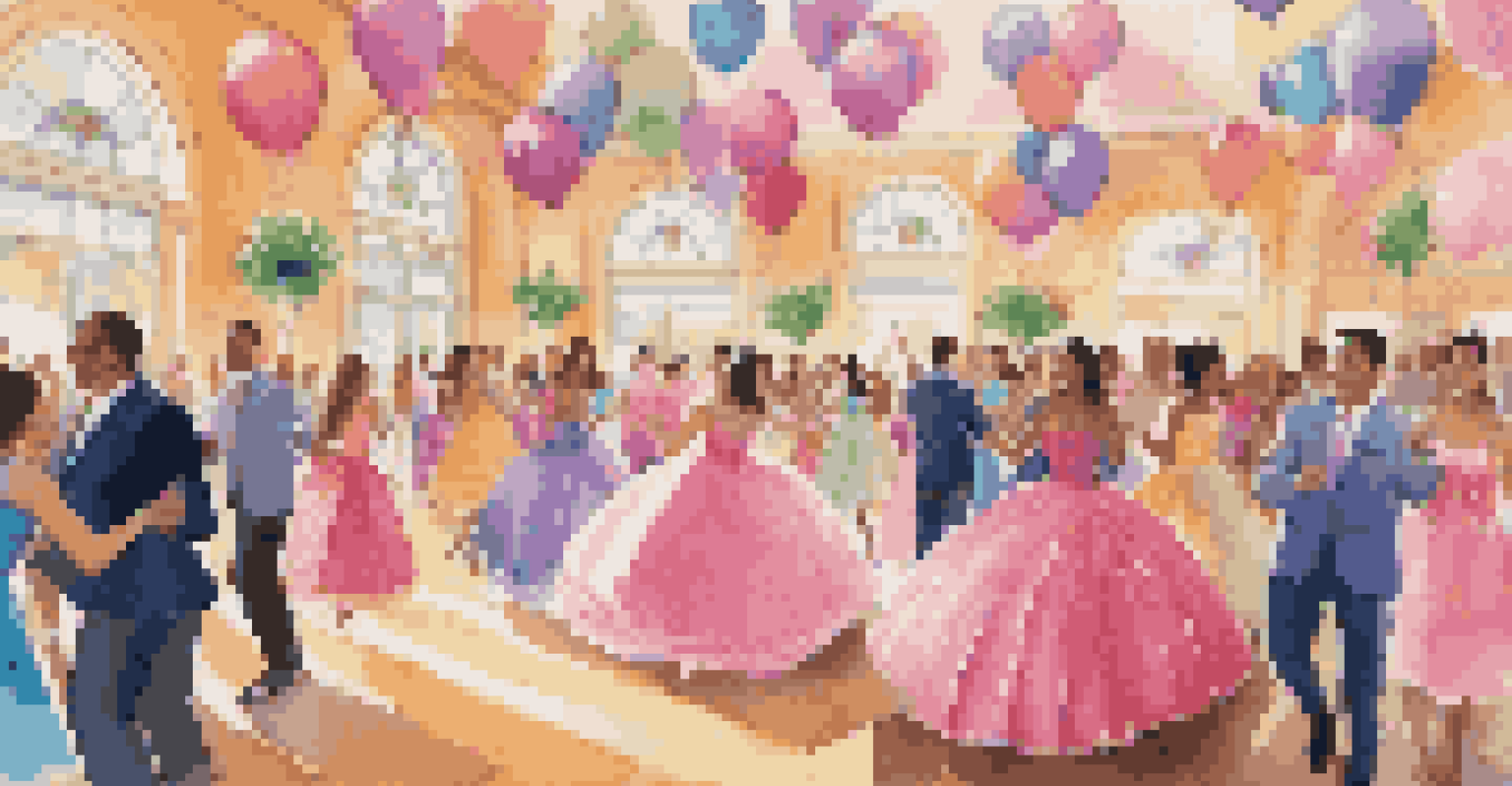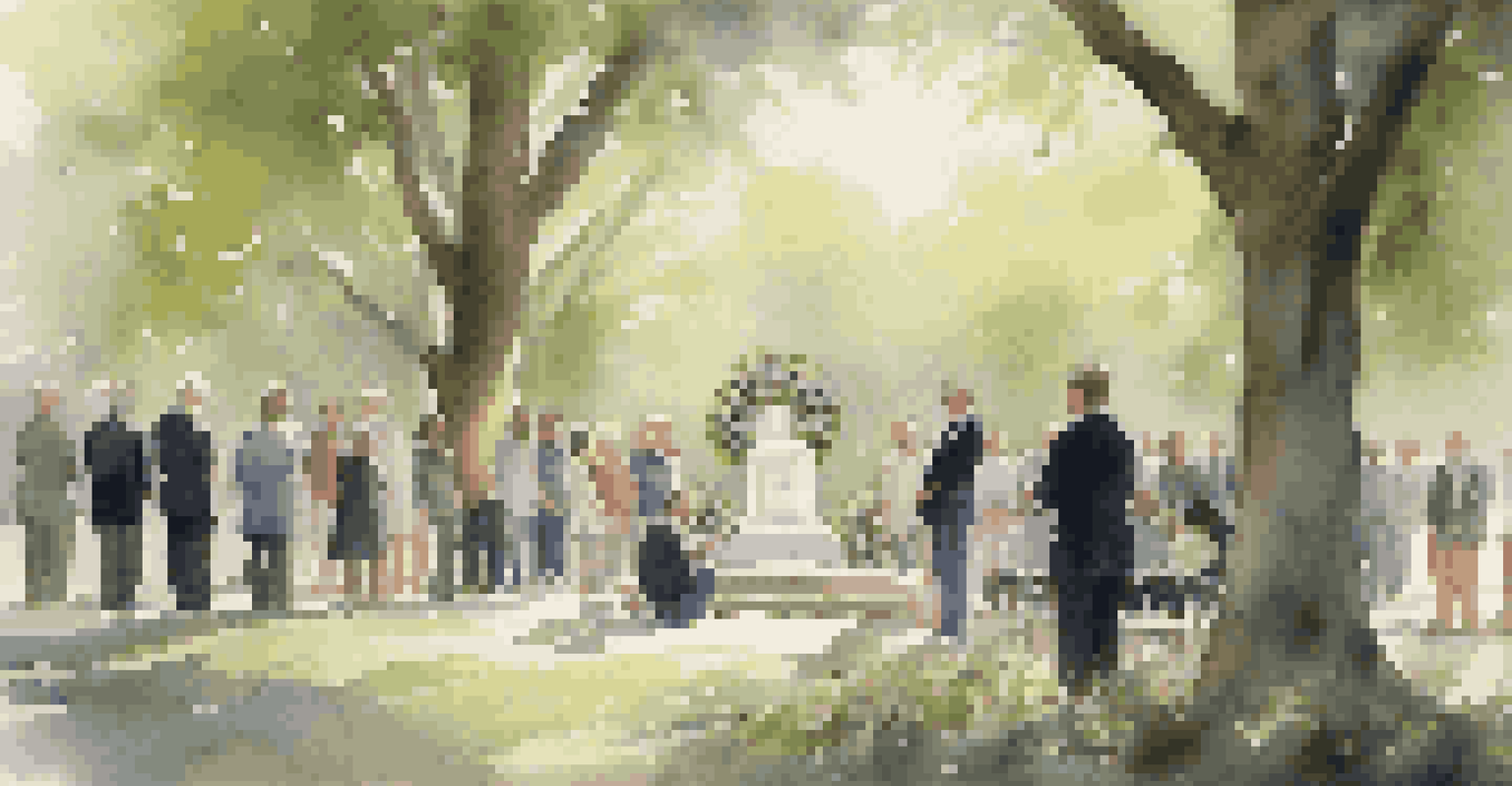Music's Role in Nonverbal Communication During Ceremonies

Understanding Nonverbal Communication in Ceremonies
Nonverbal communication encompasses all the messages we convey without words. In ceremonies, this often includes body language, facial expressions, and the atmosphere created by music. For instance, a wedding ceremony may rely heavily on visual cues, but the music sets the emotional tone, guiding guests' feelings and reactions.
Music can change the world because it can change people.
When we think about nonverbal signals, we often overlook the subtlety of sound. Music can evoke feelings and memories that words sometimes cannot express. For example, the soft strains of a violin can signal tenderness, whereas a powerful orchestral piece might communicate joy or celebration.
This interplay between music and nonverbal cues is vital in ceremonies, as it helps create a shared experience among participants. By understanding how music and nonverbal communication work together, we can appreciate the depth of these ceremonial moments.
The Emotional Power of Music in Ceremonial Settings
Music has a unique ability to evoke emotions, making it a powerful tool during ceremonies. Whether it’s a funeral, wedding, or graduation, the right piece of music can heighten the emotional impact of the event. For instance, 'Ave Maria' often played at funerals, powerfully conveys feelings of loss and remembrance.

The emotional responses elicited by music can enhance nonverbal communication among attendees. Imagine a bride walking down the aisle to a romantic melody; the music amplifies the emotions felt by everyone present, creating a shared moment of joy and anticipation. This collective experience fosters connections among guests, even without words.
Nonverbal Cues Enhance Ceremony Impact
Nonverbal communication, including body language and music, plays a crucial role in shaping the emotional atmosphere of ceremonies.
Moreover, music can help set the pace and rhythm of a ceremony, guiding attendees through various emotional states. By thoughtfully choosing music, organizers can shape the ceremony's overall atmosphere, making it a memorable experience for all involved.
Cultural Influences on Musical Choices in Ceremonies
Different cultures utilize music in unique ways during ceremonies, influencing nonverbal communication. For example, traditional African weddings may include drumming and chanting, which not only celebrate the couple but also engage the community in the experience. This cultural backdrop shapes how attendees interpret and respond nonverbally.
Where words fail, music speaks.
Similarly, a Quinceañera, a coming-of-age celebration in Latin cultures, features vibrant music that reflects the cultural heritage. The lively tunes encourage dancing and interaction, enhancing nonverbal expressions of joy and celebration among guests. These cultural nuances demonstrate how music can transcend language barriers.
Understanding these cultural differences is essential for creating inclusive ceremonies. By acknowledging and respecting the role of music in various traditions, organizers can foster a deeper connection among attendees, enriching the overall experience.
Music as a Narrative Tool in Ceremonies
Music often tells a story, making it an effective narrative tool during ceremonies. Each piece can represent different moments or emotions, guiding the audience through the ceremony's progression. For instance, a slow, melancholic piece might accompany a moment of reflection, while an upbeat tune could signal a joyous celebration.
In this way, music not only enhances the emotional landscape but also provides context for the ceremony itself. Consider how a graduation ceremony might feature a triumphant anthem to celebrate achievements, contrasting with more somber tunes during moments of remembrance for those who have passed.
Music Evokes Powerful Emotions
The right musical choices can significantly heighten emotional responses during events like weddings and funerals.
By weaving music into the fabric of the ceremony, organizers can create a rich narrative experience that resonates with attendees. This storytelling aspect of music amplifies nonverbal communication, making the ceremony more engaging and meaningful.
The Role of Silence and Pauses in Ceremonial Music
While music typically dominates the auditory landscape of ceremonies, silence and pauses also hold significant power. Moments of silence can create a profound impact, allowing attendees to reflect on the importance of the event. For example, a moment of silence during a memorial service encourages personal contemplation, enhancing the nonverbal atmosphere of respect and remembrance.
Pauses in music can also heighten emotional tension, drawing attention to key moments. Imagine a wedding ceremony where the music pauses as the couple exchanges vows; the silence amplifies the weight of their promises, emphasizing the gravity of the moment. This interplay between music and silence enriches the overall experience.
By incorporating strategic pauses and moments of silence, ceremony planners can further enhance nonverbal communication. These elements invite reflection and engagement, making the event feel more impactful and memorable.
Creating Atmosphere: Music’s Role in Setting the Scene
The atmosphere of a ceremony is often shaped by the type of music played. Soft, ambient music can create a serene environment, perfect for intimate gatherings like christenings or memorials. Conversely, energetic music can transform a space into a lively celebration, as seen in birthday parties or bar mitzvahs.
This ability to create atmosphere through music influences how attendees interact nonverbally. For example, a serene ambiance may encourage quiet reflection, while an upbeat tempo invites guests to mingle and dance. The chosen music acts as a backdrop that guides participants' actions and emotions.
Cultural Music Shapes Ceremonial Meaning
Different cultures utilize music in unique ways, influencing how attendees interpret and engage in ceremonial experiences.
By carefully selecting music that aligns with the intended atmosphere, organizers can facilitate deeper connections among attendees. This enhances the overall experience, making the ceremony more memorable and impactful.
Music’s Lasting Impact on Memories of Ceremonies
The music played during ceremonies often leaves a lasting impression on attendees, shaping their memories of the event. Certain songs can evoke powerful emotions, making them inextricably linked to the experience. For instance, a couple might always associate their wedding song with the joy and love they felt on their special day.
This phenomenon speaks to the strong connection between music and memory. When attendees hear a familiar tune from a ceremony, it can transport them back to that moment, triggering associated feelings and reflections. This connection underscores how music enhances the nonverbal aspects of ceremonies.

Ultimately, the impact of music on memories highlights its essential role in ceremonies. By creating emotional connections and lasting impressions, music contributes to the richness of the ceremonial experience, making it unforgettable for all involved.